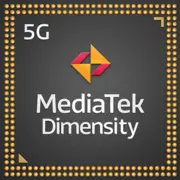MediaTek Helio P25

MediaTek Helio P25: Budget Performance with a Focus on Efficiency
(Relevant as of April 2025)
Introduction
MediaTek Helio P25 is a system-on-chip (SoC) released in 2017, still relevant in budget smartphones due to its balance of price and basic performance. As of 2025, devices featuring this processor can be found in the sub-$250 segment, competing with modern entry-level solutions. Let's explore what makes Helio P25 noteworthy and who it's suitable for.
1. Architecture and Technology Process: 8 Cortex-A53 Cores and Energy Efficiency
Helio P25 is built on the ARMv8-A architecture with eight Cortex-A53 cores operating under a big.LITTLE configuration: 4 cores clocked at up to 2.6 GHz for intensive tasks and 4 cores at 1.6 GHz for background processes. This solution offers flexibility in power management.
- Technology Process: 16 nm FinFET. By 2025 standards, this is outdated, but in budget devices, it helps lower production costs.
- GPU: Mali-T880 MP2. A dual-core graphics processor with a frequency of up to 900 MHz. It supports resolutions up to Full HD+ (2160×1080) and API Vulkan 1.0.
Features of CPU/GPU:
- Cortex-A53 — energy-efficient cores, but their performance is limited in resource-intensive tasks.
- Mali-T880 MP2 can handle light games (e.g., Candy Crush, Clash of Clans) at medium settings, but modern titles (such as Genshin Impact) may experience lag even at low graphics.
2. Real-World Performance: Modest but Stable
Gaming:
- In synthetic tests (Geekbench 6), Helio P25 scores 205 in Single-Core and 749 in Multi-Core. In comparison, Snapdragon 680 (2021) scores around ~350/1500.
- Real gaming performance: PUBG Mobile — up to 30 FPS on low settings, Mobile Legends — 40-45 FPS.
Multimedia:
- Supports video encoding/decoding up to 4K@30fps (H.265/HEVC).
- Streams content (Netflix, YouTube) in Full HD without issues.
AI Applications:
- Lacks a dedicated neural chip (NPU). Artificial intelligence tasks are handled through CPU/GPU, which slows down applications that require facial recognition or AR filters.
Power Consumption and Heating:
- Average consumption is 3-4 watts under load. A 4000 mAh battery provides 8-10 hours of screen time.
- Heating rarely exceeds 40°C due to the 16 nm process and passive cooling.
3. Integrated Modules: LTE Cat.6 and Basic Wireless Technologies
- Modem: 4G LTE Cat.6 with a maximum speed of up to 300 Mbps. Supports VoLTE and ViLTE.
- Wi-Fi: 802.11ac (Wi-Fi 5) on 2.4/5 GHz.
- Bluetooth: 4.2 with BLE (Low Energy) support.
- Navigation: GPS, GLONASS, BeiDou. Satellite systems (e.g., Galileo or QZSS) are not supported.
Limitations:
- The lack of 5G makes the chip unsuitable for next-generation networks.
- Bluetooth 4.2 lags behind modern versions in speed and energy efficiency.
4. Comparison with Competitors: The Budget Battle
Generational Comparison:
- MediaTek Helio P20 (2016): CPU frequency up to 2.3 GHz, GPU Mali-T880 MP2. P25 is 10-15% faster due to increased frequencies.
- Snapdragon 625 (2016): Similar 8×A53 but on a 14 nm process. Better energy efficiency, but GPU Adreno 506 is more powerful than Mali-T880.
Modern Alternatives (2025):
- Unisoc Tiger T610: 2×A75 + 6×A55, Mali-G52 MP2. 30% faster in multi-threaded tasks.
- Qualcomm Snapdragon 4 Gen 2: 2×A78 + 6×A55, Adreno 613. Supports 5G and Wi-Fi 6.
Conclusion: Helio P25 falls behind modern chips in performance, but it wins on price (devices using it are cheaper by $50-70).
5. Use Cases: Who is Helio P25 Made For?
- Daily Tasks: Social media, messaging, web surfing — all run smoothly. Multitasking is limited by 4 GB of RAM (typical for such devices).
- Photo and Video: Supports cameras up to 24 MP (single) or 13+13 MP (dual). HDR and electronic stabilization (EIS) are implemented at a basic level.
- Gaming: Suitable only for casual games.
Examples of 2025 Devices:
- Xiaomi Redmi A3: 6.5" HD+, 4/64 GB, $130.
- Realme C55: 6.7" FHD+, 6/128 GB, $180.
6. Pros and Cons: An Honest Assessment
Advantages:
- Low cost of devices.
- Energy efficiency.
- Stable performance in basic scenarios.
Disadvantages:
- Weak GPU for gaming.
- Lack of 5G and modern communication standards.
- Outdated CPU architecture.
7. Practical Tips: How to Choose a Smartphone with Helio P25?
1. RAM and Storage: Minimum of 4/64 GB. 6/128 GB is optimal for 2025.
2. Display: Choose FHD+ for comfortable video viewing.
3. Battery: At least 4000 mAh.
4. Cooling: Passive, but check reviews for heating issues.
5. Camera: Don't expect miracles. Better to choose models with software enhancements (e.g., AI-based night mode).
Typical Users:
- Students.
- Elderly people.
- Those looking for a second phone for calls.
8. Final Verdict: Who is Helio P25 Suitable For?
The MediaTek Helio P25 in 2025 is a choice for those who:
- Prioritize affordability: Devices under $200.
- Don't need high performance: Main tasks are social media, calls, light applications.
- Want long battery life: Up to 2 days of use on a single charge.
Key Benefits: Low price, stability, energy efficiency. If you're not a gamer and don't need 5G, Helio P25 remains a viable option. However, for future upgrades, consider chips with 5G support and modern GPUs.
Conclusion:
MediaTek Helio P25 is an example of a successful balance in the budget segment. Despite its age, it continues to serve millions of users, proving that not everyone needs top-of-the-line specifications.
Basic
GPU Specifications
Memory Specifications
Benchmarks
Compared to Other SoC
Share in social media
Or Link To Us
<a href="https://cputronic.com/soc/mediatek-helio-p25" target="_blank">MediaTek Helio P25</a>